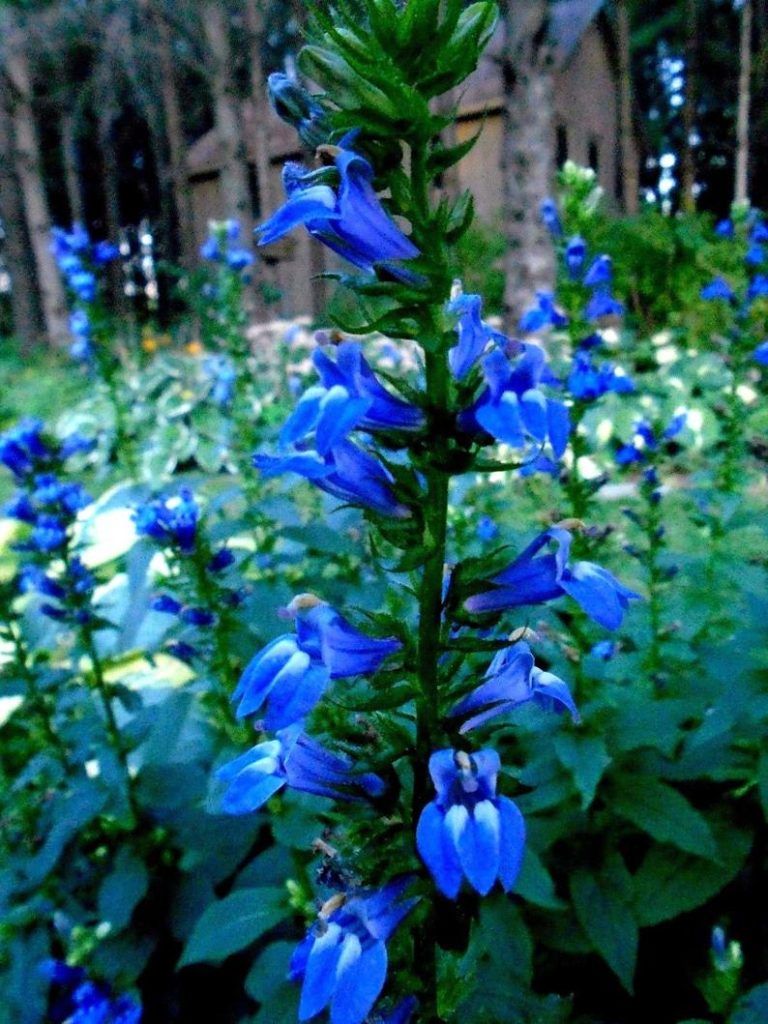October 30, 2020 —If you want an alternative to the yellow flowers all around us, seek out the bright blue spikes of great blue lobelia (Lobelia siphilitica), scattered about in the lush vegetation along Woods Creek. This native member of the bluebell family is found in damp places throughout Virginia. Bumblebees are its principal pollinators (see one in action in this video), and hummingbirds make occasional visits, although they much prefer its scarlet relative, the cardinal flower. In a fascinating example of co-evolution, the structure of the two-lipped lobelia flower prevents the bee from gathering its pollen while making sure that pollen is deposited on the bee’s back and carried to another plant. This is – a new word for my vocabulary, and maybe yours too – nototribic, i.e. dorsal, pollination, something found in most two-lipped flowers.
Valued in Europe as an ornamental since the 1600s, blue lobelia had a brief spasm of notoriety in the mid-eighteenth century. William Johnson, later Superintendent of Indian Affairs for the Northern Colonies, after significant “trouble, expense, and persuasive arguments,” secured the secret cure for syphilis from several Iroquois women. In 1751 Swedish traveler Peter Kalm and American botanist John Bartram spread word of this “newly discovered Indian cure for the venereal disease”, a decoction of the roots of great blue lobelia. Carl Linnaeus gave the plant the Latin name it still bears because of these and other excited puff pieces at the time. Soon, however, it was found to have no effect on syphilis and, although once used as a remedy for other ailments by Indians and settlers, it has fallen out of medicinal use. It remains, instead, a favorite of gardeners for its striking color in late summer. For more on this and other native lobelias, see this website.
– – by Resident Cinder Stanton for CONNECTIONS Extra
